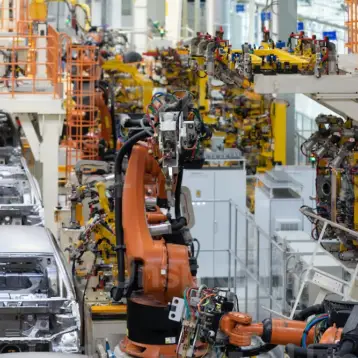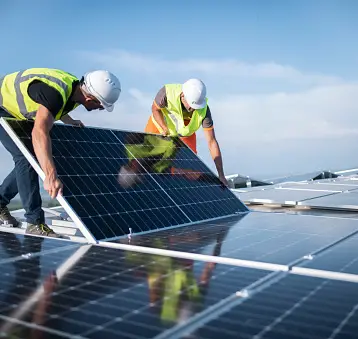EV is no longer a vision of the future but is on its way to becoming present day reality. As the world wakes up to the impact of climate change and shifts to cleaner energy sources, EVs have found a place in lessening our environmental impact.
From the elegant sedans to durable off road vehicles, EVs are revolutionizing mobility. However, the transition is not only for environmental purposes, but also for decisions that people make, for example, from conventional transport to electric vehicles, or for exclusive offers like military cars for sale, which interest hobbyists.

Now, let’s find out ways through which Electrics Vehicles impact the environment positively, the benefits they bring, and the challenges they pose.
Reduction in Greenhouse Gas Emissions
Of all the benefits that have been associated with the use of EVs, the important one is that they have the capability to lower the emission of greenhouse gases. Conventional internal combustion engines emit massive CO2, a known greenhouse gas causing global warming.
On the other hand, we have EVs which are driven by electricity which can be sourced from renewable resources such as wind, solar and hydro. As we will see it, this shift reduces emissions significantly especially where clean sources of energy are dominant.
However, the efficiency in the reduction of energy bills varies depending on the proportion of the energy mix in the grid. Wherever there is heavy dependency on coals or fossil fuels for electricity generation, the environmental advantages of EVs may reduce.
Nevertheless, the total emissions stay below the levels of regular automobiles, therefore, hybrids are an important transition toward a more environmentally friendly transportation system.
Improved Air Quality in Urban Areas
Air pollution is very high in the urban areas due to emission of vehicle fumes. By avoiding local emissions, such as from a conventional car, EVs can make a noticeable difference when it comes to the air we breathe. The absence of the emission of pollutants such as nitrogen oxides and particulate matter by EVs yields healthy cities including a reduced prevalence of respiratory diseases among the populace.
This cycle change is particularly appropriate in almost urbanized regions where the problem of air pollution has been a critical issue. As more people start using EVs, the increase in quality of air will see less people visiting hospitals and therefore improved quality of their lives.
Energy Efficiency and Resource Conservation
EVs consume far much less energy than internal combustion engine (ICE) vehicles there by making them more efficient. It was also observed that the ICE vehicles usually lose a significant amount of energy as heat while the EVs converts a higher percentage of energy from the battery into motion. They do this efficiently, thereby reducing the overall usage of energy resources.
Furthermore, EVs have an advantage of using renewable material. Most car makers are also trying to use recycled or environmentally friendly material in constructing car in a bid to reduce on the impacts they have on the environment.
Challenges in Battery Production
The use of EVs has conscious advantages to the environment although the manufacturing process especially regarding its batteries is worrisome. The modern EV’s power source, the lithium-ion batteries, need mining for the key inputs like lithium, cobalt and nickel. Such mining may negatively impact the environment, put pressure on natural resources whilst in some cases it may encourage unethical labor practices.
Also, there is an issue relating to the batteries disposal. When batteries are improperly disposed they therefore create a hazard to the natural environment. Nevertheless, improvements in battery recycling technology are unfolding steadily, meaning life cycle improvements are on the way.
Impact on Renewable Energy Integration
New generation cars are the EVs, and they are driving the adoption of renewable energy in the world. The more people charge their vehicles, the more the demand for cleaner electricity becomes crucial. It also increases the usage rate of renewable energy technologies, leaving behind the use of fossil energy sources.
Moreover, they can act as a mobile electrical energy storage center. In future, vehicle-to-grid (V2G) may enable EVs to feed excess power back to the grid to help develop a more sustainable energy system.
Promoting Sustainable Transportation Solutions
The growth in the adoption of EVs is in sync with other sustainable mobility trends. There are more and more public charging areas for electric vehicles, the use of electric cars through car-sharing services, and emission-free electric public transportation. These efforts not only reduce the environmental impact of transportation, but also help to bring affordable EVs to the masses.
Conclusion
The effects of EVs are revolutionary when it comes to environmental issues. Through cutting emissions, cleaning the air and encouraging efficiency, EVs have set the path for climate as well as environmental change.
As with any technology, there are numerous challenges such as battery production and disposal but with ongoing development, and new technology, recycling remains a good opportunity for lithium investors.
Traveling in EVs is not only a way to join the generation of more comfort but also the maintenance of the environment. In the current world where everyone is embracing cleaner means of transport, EVs are perhaps one of the surest ways of making the world a better place to live in.










